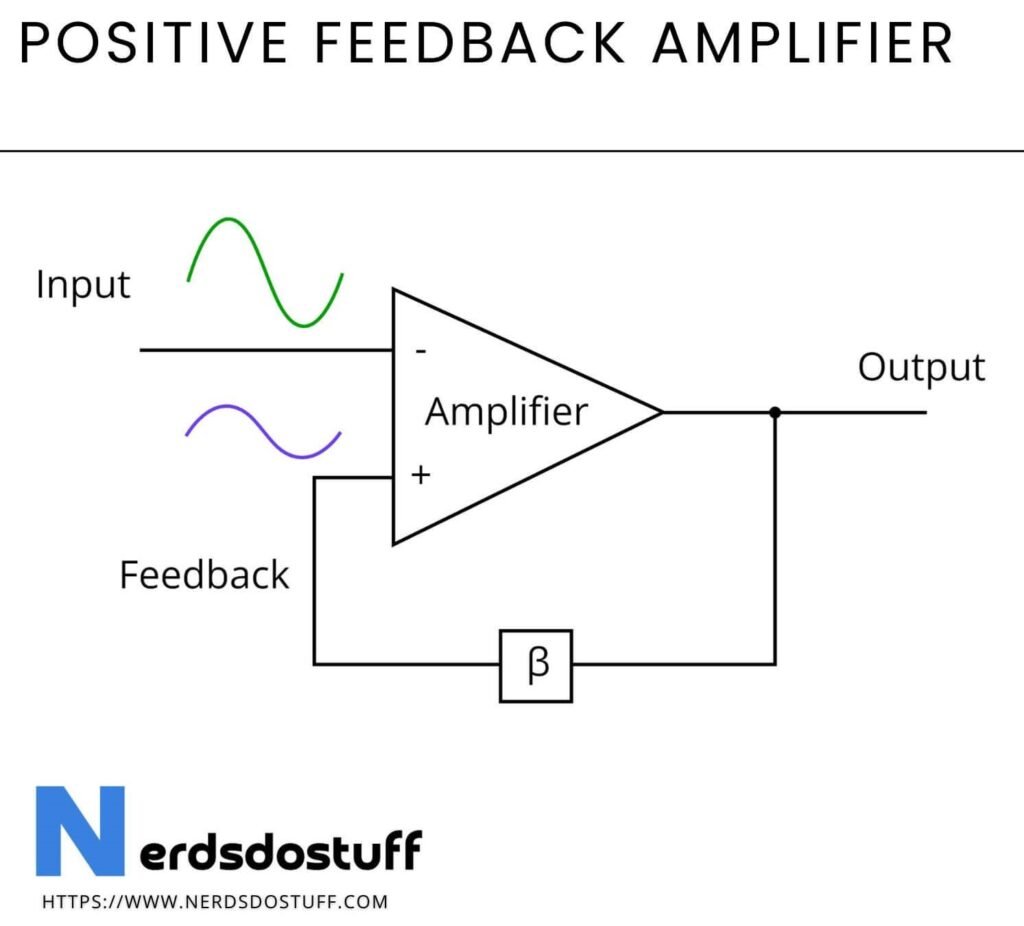What is Positive Feedback Amplifier ?
A positive feedback amplifier is an electronic circuit that increases the amplitude of an input signal through a loop in which a portion of the output signal is fed back to the input with the same polarity. Unlike negative feedback, which stabilizes and controls the amplifier, positive feedback amplifies the input signal, potentially leading to instability or oscillation. This amplification effect makes positive feedback amplifiers suitable for applications such as oscillators, where a sustained oscillating output is desired.
Why Positive Feedback Amplifier is used ?
Positive feedback amplifiers are employed in various electronic systems for their unique ability to enhance and sustain signals. Unlike negative feedback amplifiers that stabilize and control output, positive feedback amplifiers accentuate and reinforce input signals, leading to increased amplification and responsiveness. This makes them particularly useful in applications where a high degree of sensitivity or gain is required, such as in oscillators and certain audio systems. Positive feedback amplifiers can contribute to the generation of sustained oscillations, which is crucial in applications like radio frequency (RF) communication where a continuous and stable signal is essential for transmission.
Additionally, positive feedback amplifiers find utility in systems where rapid response and high sensitivity are paramount. Their ability to amplify small signals can be advantageous in scenarios where the input signal strength is weak, helping overcome noise and signal degradation challenges. While negative feedback amplifiers are commonly used for stability and precision, positive feedback amplifiers shine in applications where dynamic amplification and signal enhancement are vital, contributing to the diversity of amplifier configurations available in electronic design.
Positive Feedback Amplifier Circuit Diagram

Working of Positive Feedback Amplifier
A positive feedback amplifier operates by reinforcing the input signal, resulting in an output that is not only amplified but also exhibits increased sensitivity to changes in the input. The process involves a continuous loop where a fraction of the output signal is fed back to the input, thereby augmenting the original input signal. This reinforcement leads to an exponential growth of the output, making positive feedback amplifiers prone to instability and oscillations if not carefully designed.
In a simple voltage amplifier circuit with positive feedback, an increase in the input signal results in a corresponding increase in the output. The feedback loop introduces a portion of the output back into the input, effectively adding to the original input. This creates a regenerative cycle where the signal is continually reinforced, causing the amplifier to respond more dramatically to changes in the input.
Applications of Positive Feedback Amplifier
- Oscillators: Positive feedback amplifiers are widely used in oscillator circuits to generate continuous waveforms, such as sine, square, or triangle waves. The regenerative feedback in these circuits sustains oscillations, making them essential components in frequency generators for applications like signal synthesis and communication systems.
- Audio Systems: Positive feedback amplifiers are employed in audio systems to enhance the perception of certain frequency ranges or to create specific tonal qualities. They can be used in guitar amplifiers or equalization circuits to introduce desirable harmonic distortion or coloration to the audio signal.
- RF (Radio Frequency) Amplifiers: In RF communication systems, positive feedback amplifiers can be used to boost weak signals and improve the overall sensitivity of receivers. The increased gain helps in detecting and amplifying low-intensity signals in radio and wireless communication applications.
- Amplification of Weak Signals: Positive feedback amplifiers are suitable for applications where the input signal is weak, and high sensitivity is required. They can amplify small signals, making them useful in scenarios such as biomedical sensors or environmental monitoring devices.
- Biological Systems (Neural Networks): Positive feedback amplifiers are employed in the modeling of biological systems, particularly in neural networks. They can mimic the behavior of neurons and contribute to the generation of rhythmic patterns or oscillatory responses, aiding in the study of brain functions and artificial intelligence applications.
- Self-Biasing Circuits: Positive feedback can be utilized in self-biasing circuits to automatically adjust and stabilize operating points. This is useful in amplifier designs where maintaining a specific bias point is critical for optimal performance, ensuring that the amplifier remains within a desired operating range.




